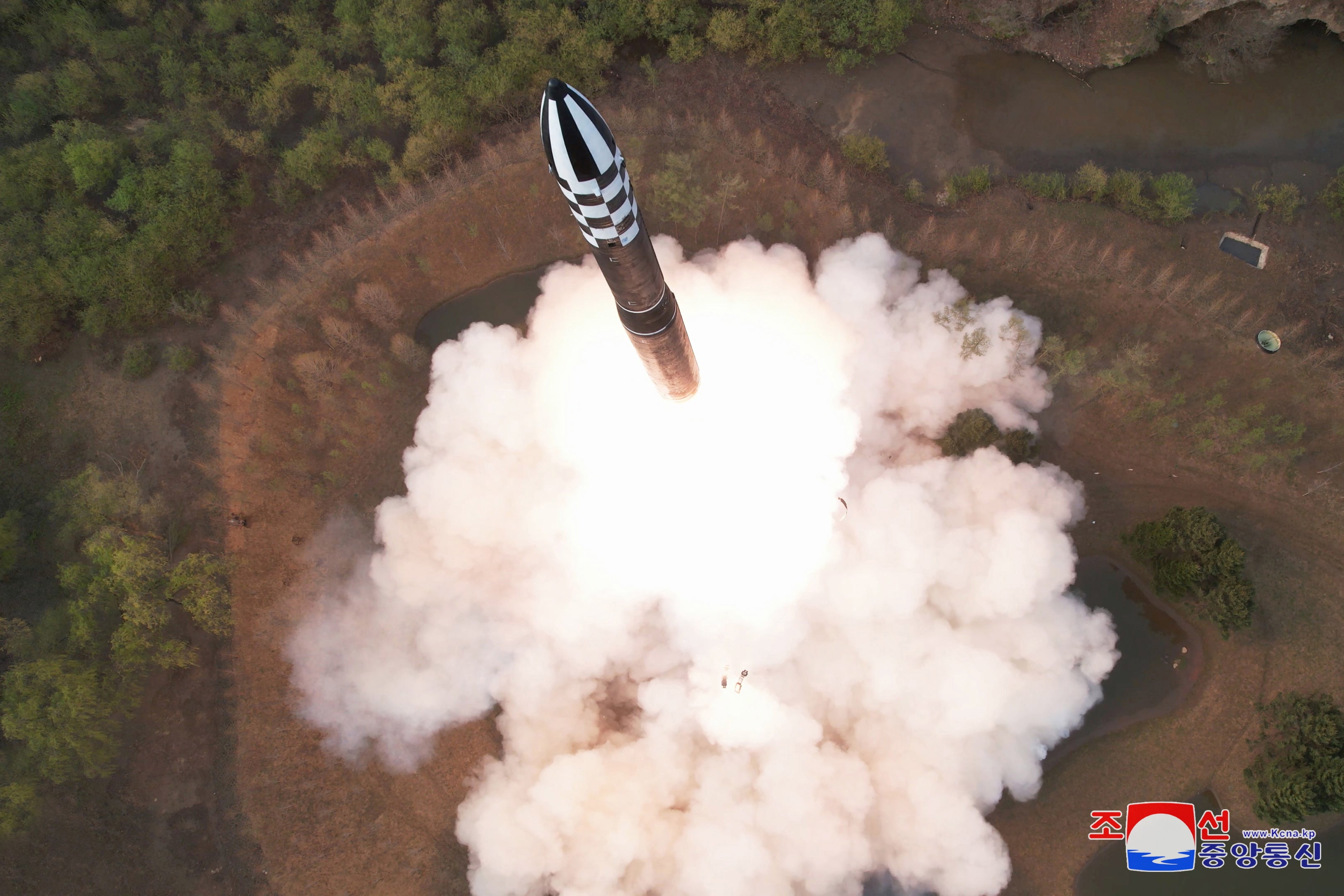Russia has fired a new intermediate-range ballastic missile at Ukraine in what Ukrainian president Volodymyr Zelensky called a “severe escalation” of Moscow’s invasion.
Initally, Ukraine suggested an intercontinental ballistic missile (ICBM) had been launched against the city of Dnipro, would be the first known use in the war of a weapon designed to avoid defences travel thousands of miles, with the potential to carry nuclear warheads.
The new missile was experimental, but not an ICBM and Russia likely possessed only a handful of them, US officials said.
The Pentagon said the missile was fired with a conventional warhead but that Moscow could modify it if it wanted.
“It could be refitted to certainly carry different types of conventional or nuclear warheads,” Pentagon spokesperson Sabrina Singh said.
Here, we discuss what ICBMs are, and how many Russia has.
What are ICBMs?
Intercontinental ballistic missiles are strategic weapons designed to deliver long-distance nuclear warheads and are an important part of Russia’s nuclear deterrent.
ICBMs have a range of more than 3,400 miles.
While the range of an ICBM would seem excessive for use against Ukraine, such missiles are designed to carry multiple nuclear warheads - a reminder of Russia’s nuclear capability.
Although defence systems like the US Patriot have proven effective against advanced short-range and intermediate-range missiles, they are not designed to counter ICBM threats.
How many ICBMs does Russia have?
According to an Arms Control Centre report published in 2022, it is estimated that Russia has roughly 306 strategic ICBMs, that together can carry up to 1,185 nuclear warheads.
These include the SS-27 Mod 1 (Topol-M) and the SS-27 Mod 2 (Yars), both capable of carrying multiple nuclear warheads.
Additionally, Russia is reportedly developing the Sarmat (SS-X-30) missile that is advertised as larger and more capable than previous designs.
Alongside the Sarmat, Russia is also said to be developing a hypersonic glide vehicle known as Avangard.


During the Cold War, the Russians developed hundreds of ICBMs named Satan, Stiletto and Sickle.
Since Putin came to power in 2000, the Kremlin has worked to upgrade the Soviet-built components of the triad, deploying hundreds of new land-based missiles, commissioning new nuclear submarines and modernising nuclear-capable bombers.
Russia is said to have re-equipped its land-based strategic missile forces with mobile Yars ICBMs and recently began deploying the heavy, silo-based Sarmat ICBMs — labelled “Satan II” missiles in the West — to gradually replace about 40 Soviet-built R-36M missiles.
Sarmat has had only one known successful test, and reportedly suffered a massive explosion during an abortive test last month.
What is a RS-26 Rubezh?
Ukraine had initially identified the missile fired at Dnipro as a RS-26 Rubezh, Ukraine’s Ukrainska Pravda media outlet reported, citing anonymous sources.
The US military said the Russian missile’s design was based on the design of the RS-26 Rubezh intercontinental ballistic missile (ICBM).
According to the Arms Control Association, the RS-26 has a range of 5,800 km and can reach supersonic speeds of around 4,000mph.
The speed makes it extremely difficult to intercept for existing missile defence systems.
The RS-26 Rubezh is designed to carry a warhead weighing up to 1,200 kilograms, a payload equivalent to three Iskander missiles combined.







